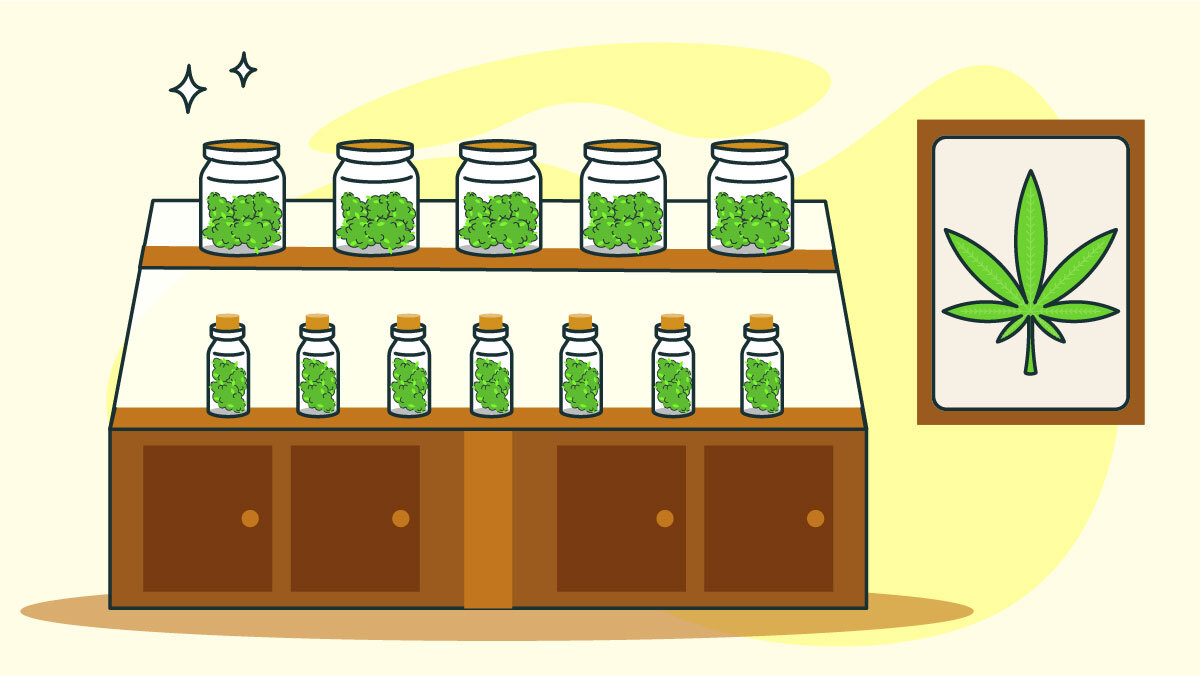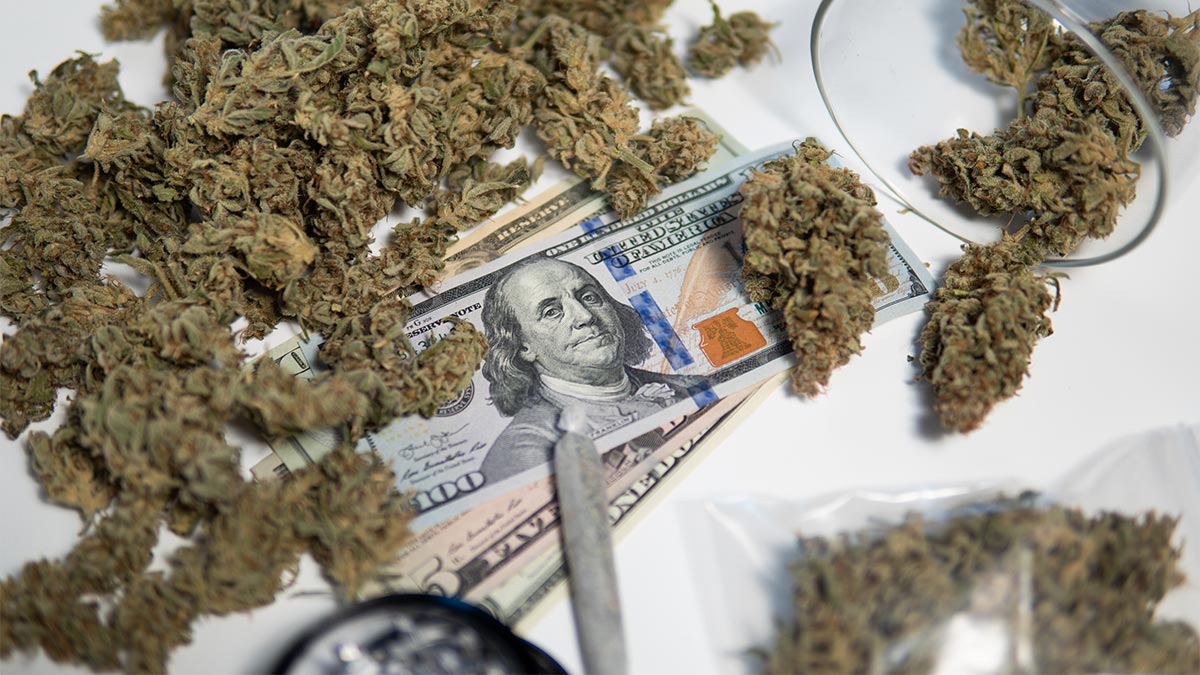How Much Do Dispensary Owners Make?

When you visit a marijuana dispensary, you’re surrounded by green.
If you’re an entrepreneurial weed lover, though, you may see two types of green: the stuff on the shelves — and the enormous amount of money the place must be raking in, day after day.
Sure, most of us have probably had idle thoughts about growing weed. Many of us have undoubtedly fantasized about how much we could make by quitting our day job and selling our crops instead.
But dispensary owners must be living the high life, even if they don’t regularly get high off their own supply. Right?
Not necessarily. In reality, having a license to sell legal weed isn’t always the golden ticket it might seem.
Let’s look at the facts.
How Big is the Legal Marijuana Business?
It’s estimated that there are nearly 10,000 cannabis dispensaries throughout America. The states in which the most legal weed is sold probably won’t surprise you: California, Washington, and Colorado.
Other numbers tell a different type of story. The states with the greatest number of dispensaries, per capita, are Oregon, Oklahoma, and Montana. Yes, you read that right, but here’s the explanation. Licensed dispensaries in Oklahoma and Montana are almost all small ones, and they do a tiny amount of business compared to pot shops in California and the rest of the “big 3.”
Overall, the U.S. legal cannabis industry is estimated to be worth $61 billion, and that number is projected to hit $100 billion by 2030. If something is worked out to let marijuana dispensaries use the existing U.S. banking system (right now, they mostly have to deal in cash), that number could soar even higher.
We just saw those dollar signs in your eyes get even larger. Hold on, though. Getting into the industry isn’t easy and it isn’t always profitable.
Who Runs Dispensaries?
You can’t just decide to open a marijuana dispensary, rent a storefront and begin minting money.
Needless to say, you have to be in a state where weed has been legalized, either just for medical patients or for widespread recreational use. Once you’ve cleared that hurdle, there are a lot more of them waiting for you.
The cannabis industry software company Cova (yes, there is such a thing) warns that prospective dispensary owners must satisfy strict local requirements, including criminal background checks and zoning regulations.
That’s not the biggest hurdle. In most jurisdictions, there are a limited number of licenses available, and startup costs (including license fees) will usually start at $150,000 for a very modest operation. It can cost as much as $2 million to open a dispensary in large states where only a few licenses are granted. It doesn’t hurt to be rich, either; some states like Pennsylvania won’t give you a license if you don’t have at least $2 million in assets, with one-quarter of that amount held as liquid assets.
That playing field favors large operators who are already in the cannabis business, and many of the companies that own a large number of dispensaries are vertically integrated. In other words, they also run their own farms and processing facilities. At last count, firms like Curaleaf and Trulieve own more than 100 licenses across the country. That’s worth a lot of money; Curaleaf’s annual sales hit $1 billion in 2021.
You can probably guess that “ordinary” dispensary owners don’t earn anywhere near that much by selling weed by the eighth or the quarter.
How Much Does a Dispensary Earn?

When you’re running your own dispensary, you obviously don’t get to keep all the cash that you collect.
Dispensary owners, like all business owners, incur lots of expenses. Annual license fees, rent, staffing, equipment, marketing, ancillary services, and debt service (paying off any loans needed to start the business) all peel off a huge percentage of the money that initially goes into the cash registers. Weed dispensaries also have to pay much higher fees than other businesses for services like security and surveillance.
What does that mean in real numbers?
The best source for that information is the Marijuana Business Factbook published by MMJ Business Daily. They surveyed hundreds of dispensary owners and came up with some terrific insights on revenues, costs, and profit.
15% of the respondents said they grossed less than $100,000 per year in sales. 27% said their sales were between $100,000 and $250,000, and 15% said gross sales were between $250,000 and $500,000. Another 15% reported sales between $500,000 and $1 million. And 27% grossed more than a million dollars per year.
Simply put, dispensaries were much more likely to bring in less than $250,000 in sales than they were to sell a million dollars worth of pot per year.
What could account for such a huge difference? Most of the low-grossing operations are tiny stores in small towns, with zero or very few employees. The survey didn’t clarify where those shops are, but it would be a good guess that they are in states like Oklahoma or Montana. The dispensaries bringing in $1 million or more, on the other hand, are primarily chains or stores in high-population areas, with lots of employees and a loyal customer base.
The biggest expense for most dispensaries is payroll. The amount that employees make depends, in part, on the cost of living in the area and the amount of competition for experienced workers. But Cova reports that it costs the average dispensary about $250,000 per year to pay employees. That means salaries aren’t as low as you might have guessed.
Figures from Indeed.com show that the average salary for its categories of budtenders and sales associates ranges from $33,000-$49,000 per year [1]. Dispensary managers, store managers, and security officers all earn around $50,000 per year. Surprisingly, the highest-paid “front line” workers are delivery drivers, who average more than $60,000 per year.
That theoretically leaves a lot of money on the table. How much of it does the owner get?
How Much Dispensary Owners Make
Well-known marijuana entrepreneur Gary Cohen says that the average profit margin for a dispensary is between 15% and 21% after taxes. Not all of that money goes directly into the owner’s pocket, of course.
But Cohen says that the owner of a dispensary with annual revenue of $5 million or more could expect to make a salary of $500,000 per year — or more.
That doesn’t mean every owner makes that kind of money. Another survey by Marijuana Business Daily reported that only 18% of owners said they were “very profitable,” 41% said they were “moderately profitable,” 29% said they were breaking even, and 12% said they were running in the red.
Remember, 57% of owners surveyed said their gross sales were less than $500,000 per year; that’s only enough to pay the owner a fraction of the half-a-mil that the top owners make. It’s probably fair to assume that owners of those mom-and-pop stores in Oklahoma probably aren’t making half a million a year.
Even so, with the projected rise in the size of the U.S. cannabis industry over the next ten years, and the likelihood that more states — and even the federal government — will legalize weed in the near future, it’s certainly not a bad business to be in.
How Much Money Do Dispensary Owners Make? FAQ
Q: Is there a way to measure how smart an investment a marijuana dispensary really is?
A: Again, it depends on the market, competition, and many other factors. But industry experts say the average profit margin for a well-run dispensary is almost $1000 per square foot of dispensary space. That means a relatively-small dispensary could return as much profit as an upscale grocery store while needing just one-fifth of the floor space.
Q: Where do those who aren’t independently wealthy get this type of start-up money?
A: In the recent past, a number of cannabis investors have provided start-up capital for would-be dispensary owners. The availability of that money has slowed over the last year or two, though, as larger cannabis operations are asserting themselves and taking over much of the market.